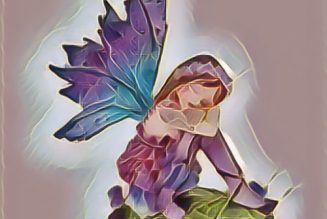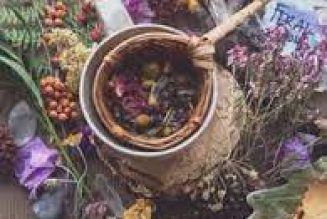Calendula, known botanically as Calendula officinalis, is a radiant and versatile plant cherished for centuries across cultures. With its bright orange and yellow daisy-like flowers, calendula is instantly recognizable in gardens and wild meadows alike. The plant typically grows to about 12 to 24 inches tall, with lance-shaped, slightly sticky leaves that are softly hairy to the touch. Its stems are angular and branching, supporting a profusion of blooms that open with the sun and close at night or in cloudy weather—a phenomenon known as heliotropism. The seeds of calendula are uniquely crescent-shaped and bristly, easily collected for propagation.
Calendula’s botanical beauty is matched by its rich history and diverse uses. Sometimes called “pot marigold,” calendula is not to be confused with the common marigold of the Tagetes genus. Its many folk names—summer’s bride, bride of the sun, sun’s gold, ruddes, ruddles, holigold, drunkard, goldes, husbandman’s dial, marybud, marygold, mary gowles, and oculis christi—reflect its widespread popularity and the affection it has inspired through the ages.
Historically, calendula was known as “poor man’s saffron,” prized for its ability to color and flavor foods. In medieval Europe, its petals were used to tint butter, cheese, custard, bread, cookies, soups, and rice dishes, and even today, calendula petals are sprinkled into salads for a splash of color and a mild, peppery taste. Calendula is generally recognized as safe for food use, and its edible petals have long been a staple in both humble kitchens and royal feasts.
Medicinally, calendula has been revered since at least the 12th century. Folk healers in Europe prepared infusions, extracts, and ointments from the petals to induce menstrual flow, promote sweating during fevers, and treat jaundice. In 19th-century America, Eclectic physicians used calendula internally for liver problems, stomach ulcers, and conjunctivitis—commonly known as pink eye—and externally for superficial burns, bruises, and wounds. Tinctures, ointments, and washes made from calendula are still used today to speed the healing of cuts, scrapes, and minor infections, as well as to soothe hemorrhoids and skin irritations.
Modern research supports many of these traditional uses. Animal studies show that calendula can accelerate wound healing, likely by increasing blood flow to the affected area and stimulating the production of collagen, the protein essential for repairing skin and connective tissue. Calendula flowers also demonstrate astringent and anti-inflammatory properties, making them valuable for treating skin and mucous membrane inflammations such as pharyngitis, leg ulcers, boils, bed sores, gum inflammation, and rashes. Some herbalists recommend calendula’s essential oil for treating vaginal yeast infections, and its bright orange pigment is used in the pharmaceutical industry to color medicinal preparations.
Calendula’s magical properties are as vibrant as its golden petals, making it a beloved ally in witchcraft and folk magic. Deeply connected to the Sun and the element of Fire, calendula is believed to radiate energy that brings light, warmth, and protection into any space. In traditional witchcraft, calendula is often used to invoke the power of the sun, especially during rituals for clarity, vitality, and personal empowerment. Its flowers are commonly included in spells and charms for protection, psychic enhancement, and prophetic dreams.
In folklore, calendula is said to possess the ability to reveal hidden truths and to strengthen the intuition of those who work with it. Placing calendula petals beneath your pillow is a time-honored practice for inviting vivid, prophetic dreams and for receiving messages from the spirit world. Some traditions recommend adding calendula to dream sachets or sleep pillows, often combined with other visionary herbs like mugwort or lavender, to enhance psychic awareness and dream recall.
Calendula is also a powerful ingredient in rituals of protection. Garlands or wreaths of calendula hung above doorways or windows are believed to ward off evil, negativity, and unwanted spirits. Sprinkling calendula petals around the home or at the threshold is thought to create a barrier of light that keeps harm at bay. In some folk practices, a protective charm is made by tying dried calendula petals with orange or gold ribbon and hanging it above the entrance to safeguard the household.
In matters of justice and legal affairs, calendula has a long-standing reputation as a plant that can tip the scales in your favor. Carrying calendula flowers in your pocket or placing them in a charm bag is said to help ensure a fair outcome in court or legal disputes. Some practitioners write their legal wishes on a piece of paper, wrap it with calendula petals, and burn it at noon—when the sun is at its peak—to call upon solar energy for truth and justice.
Love and attraction spells frequently feature calendula for its ability to inspire admiration, respect, and affection. Bathing in water infused with calendula petals is believed to enhance personal magnetism, draw positive attention, and even add a golden glow to your hair. A traditional love divination involves mixing dried calendula with marjoram, thyme, and wormwood, simmering the blend in honey and white wine, and anointing the body while chanting your desires to receive prophetic dreams about your future partner. If the person in your dream is kind, they are said to be a loving match; if not, caution is advised.
Rituals for spiritual clarity and communication often include calendula as well. Burning calendula petals as incense during meditation or divination is thought to open the third eye and strengthen the connection to higher wisdom. Some witches use calendula oil to anoint candles, tools, or themselves before performing spells for insight, creativity, or solar blessings.
In seasonal celebrations, calendula is a popular choice for honoring the sun at Midsummer or the Summer Solstice. Its golden blooms are woven into crowns, garlands, and altar decorations to celebrate the height of solar power and to invite abundance, joy, and success into the coming months.
Despite its many benefits, calendula should be used with caution. It can affect the menstrual cycle and is not recommended during pregnancy or breastfeeding. There is also a theoretical risk that calendula may affect conception, so couples trying to conceive should avoid its use.
From its botanical splendor and culinary versatility to its healing powers and magical lore, calendula is a plant that bridges the worlds of science and spirit. Its golden blooms continue to inspire, heal, and enchant—reminding us of the enduring magic found in the heart of nature.

































